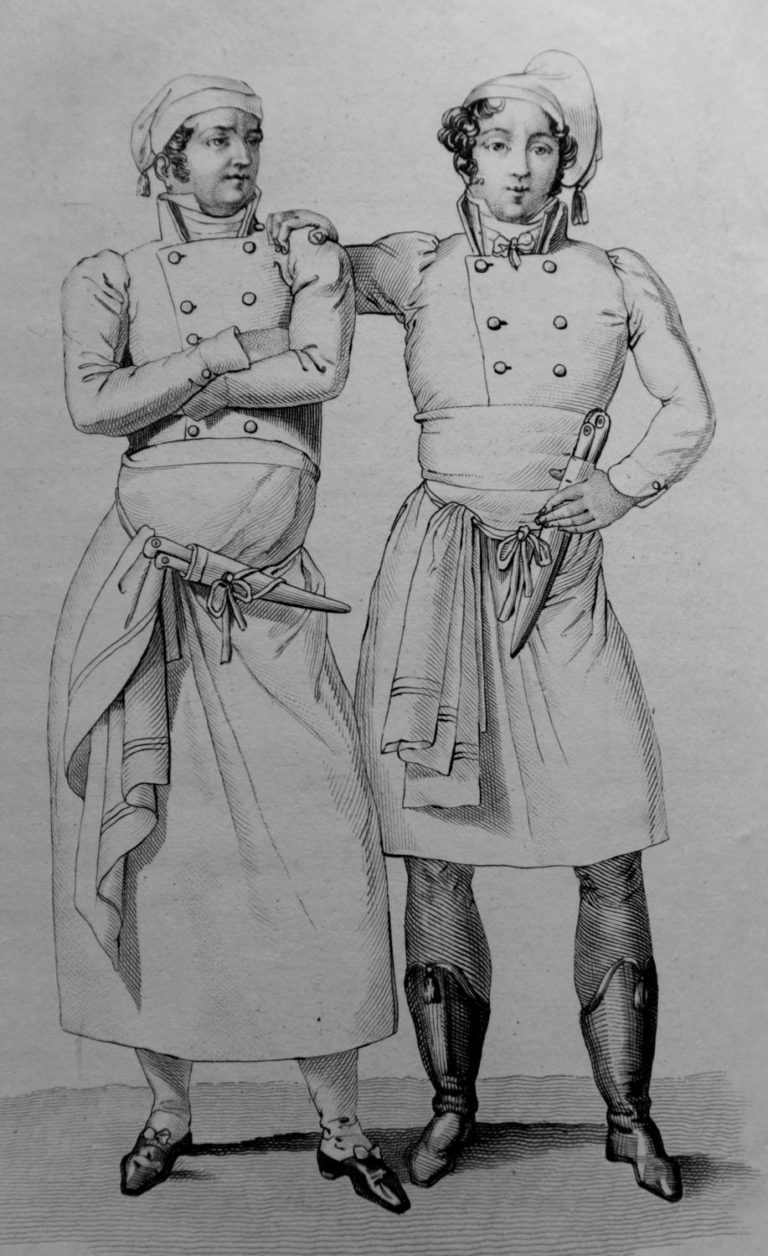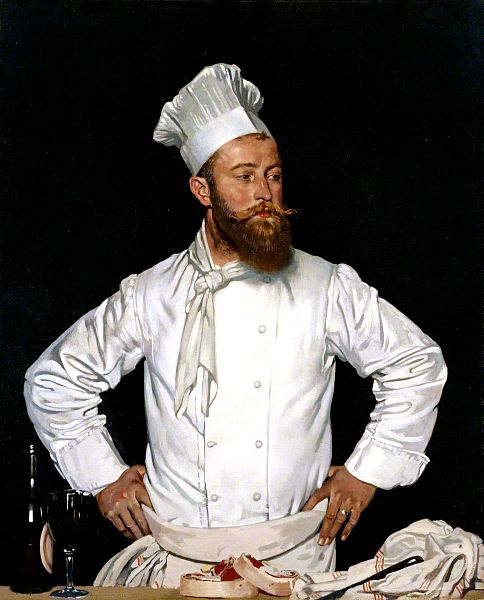Chefs have a distinguishing uniform that dates back centuries, with the chef’s jacket being the most distinguishing part of the attire today. Chefs in kitchens big and small utilize the chef’s coat and uniform for a variety of reasons.
The Beginnings of the Chef Uniform
French chef Marie-Antoine Careme is credited with the look of the modern chef uniform along with many other culinary innovations. He wanted to create a form of dress that would professionalize the culinary arts to go along with his “high art” French cooking called grande cuisine. In 1822, Marie-Antoine Careme released “Le Maitre d’Hotel Francais”, one of his several cooking books filled with recipes, menu plans, French culinary history, kitchen organization and more. His book contains this sketch below:

The two chefs in the drawing are depicted wearing a toque, trousers, a double-breasted jacket, and an apron. This would become inspiration for famous French chef Georges Auguste Escoffier, who created the Brigade de Cuisine aka the named positions in the professional kitchen staff we see in classic restaurants today. Escoffier was inspired by Careme’s work and standardized this style of uniform in his kitchens across France, transforming the culinary world forever.
The Chef Hat (Toque)
The chef’s toque (an Arabic word for ‘hat’) goes beyond keeping hair out of their face or the food. The hat is not only a tool, but a symbol of professionalism and status. There are many different rumored origin stories as to how the toque came to be, and you can read some of the dynamic history here. The hat itself is tall, round, white, starched and pleated. White was chosen as part of the traditional chef uniform to symbolize professionalism and cleanliness.
The hat is also often used to symbolize the skill and rank of the chef. The origin of the pleats came from the idea that a pleat was added when a technique was mastered. If a chef had 100 pleats, he would know 100 different recipes. It is now very traditional to have 100 pleats, but the symbolism still stands. The chefs with the highest rank also have the tallest hats. Various hat styles may be used in kitchens to define roles as well.
The Chef Jacket
A traditional chef coat is a double-breasted jacket made from a thick, white, cotton cloth. Both Careme and Escoffier believed the white jacket was essential, as there was no better way to show that food was prepared in a pristine and safe environment. White is also an optimal color to well as it can deflect heat, helping a chef in a steamy kitchen. The design of the chef coat itself has been carefully selected.
The heavy cotton material helps protect the chef from any intense heat in the kitchen while remaining breathable and absorbent. The long sleeves help to protect the arms from any burns and cuts. The French knotted buttons don’t chip or fall off like plastic buttons do, preventing any chance of contamination. The buttons can also come undone quickly in case of an emergency like a hot spill. The double-breasted jacket protect chefs from steam, splashing liquids and other potential kitchen hazards. This double-breasted feature also can help hide stains.

The Chef Pants and Apron
Escoffier changed the pants from Careme’s original sketch design to a black and white houndstooth pattern that was popular at the time. That particular pattern was chosen to help mask any spills or stains. The traditional long white apron was intended mostly for safety purposes as an extra layer of protection from any spills. It was also designed to be able to remove easily in case of any emergencies.
![]()
It’s obvious that this look has changed. Chefs today have swapped the tall hats and checkered pants for more practical and modern styles. Although chefs today wear a variety of colors and styles, the uniform’s history still holds much influence, connecting chefs across many generations.




0 Comments